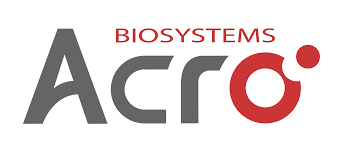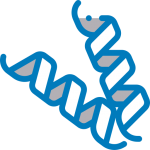
 Mouse TRAIL R2 / DR5 / TNFRSF10B Protein, His Tag
Mouse TRAIL R2 / DR5 / TNFRSF10B Protein, His Tag
TR2-M52H5
1mg
Brand
ACROBiosystems
Description
Source :
Mouse TRAIL R2, His Tag (TR2-M52H5) is expressed from human 293 cells (HEK293). It contains AA Asn 53 – Lys 180 (Accession # Q9QZM4-1).
Molecule : TRAIL R2
Synonyms : TNFRSF10B,TRAILR2,TRAIL-R2,CD262,DR5,KILLER,TRICK2,ZTNFR9,TRICKB
Format : Powder
Category : Bio-Markers & CD Antigens
Accession : NP_064671.2
Storage : -20℃
Shipping condition : Powder,RT
Molecular Weight : 16.1 kDa
Characteristics :
This protein carries a polyhistidine tag at the C-terminus. The protein has a calculated MW of 16.1 kDa. The protein migrates as 25-35 kDa under reducing (R) condition (SDS-PAGE) due to glycosylation.
Endotoxin Level : Less than 1.0 EU per μg by the LAL method.
Buffer : PBS, pH7.4
Description :
Tumor necrosis factor receptor superfamily member 10B (TNFRSF10B) is also known as TNF-related apoptosis-inducing ligand receptor 2 (TRAILR2), Death receptor 5 (DR5), CD262, KILLER, is a member of the TNF-receptor superfamily, and contains an intracellular death domain. TNFRSF10B / DR-5 is widely expressed in adult and fetal tissues; very highly expressed in tumor cell lines. TRAILR2 / CD262 / DR5 is the receptor for the cytotoxic ligand TNFSF10/TRAIL. The adapter molecule FADD (a death domain containing adaptor protein) of TRAIL-R2 / TNFRSF10B recruits caspase-8 to the activated receptor. The resulting death-inducing signaling complex (DISC) performs caspase-8 proteolytic activation which initiates the subsequent cascade of caspases (aspartate-specific cysteine proteases) mediating apoptosis. CD262 / DR5 Promotes the activation of NF-kappa-B. DR5 is essential for ER stress-induced apoptosis and is regulated by p53/TP53.
References :
(1) Yamaguchi H., et al., 2004, J. Biol. Chem. 279:45495-45502.
(2) Gajate Consuelo, et al., 2005, J. Biol. Chem. (United States) 280 (12): 11641–7.
(3) Chaudhary, P M., et al., 1997, Immunity (UNITED STATES) 7 (6): 821–30.
Application
Reactivity



